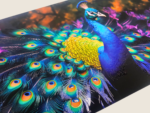According to market research specialists at Ipsos, 72% of consumers are influenced by the design and materials used in product packaging when making purchasing decisions.
Another statistic from Forbes shows that up to 80% of consumers, despite being satisfied with a product, may not purchase from the brand again if they do not experience a ‘wow’ factor during their encounter.
For businesses that are not entirely confident with the way their products are presented, these numbers can be frightening. A company can do several things to make sure its product packaging is exciting, memorable, and viable.
Questions to Ask Yourself About Product Packaging
What is the product?
Although this may seem like a no-brainer, a re-evaluation of your product can lead to many revelations. Understanding the nature of your product in the context of packaging will influence your choice of materials to use, the shape of the package, the size of the container, and other logistical factors. Fragile jars, for example, will need packaging fillers to prevent them from breaking during transit. Irregularly shaped objects may need custom packaging solutions.
Who is the ideal consumer?
Understanding your target market well has so many far-reaching benefits for your business overall. In packaging, it’s the same story and needs to appeal to your target market. Products like toys and games geared towards children, for example, can be packaged in colorful and attention-grabbing containers. Products for the elderly, like home medical devices, may need to have larger text that can be read even if visually impaired.
How is the product bought?
Whether your product is bought from a physical store or online will heavily influence its packaging. Products displayed on shelves alongside competitors will need more attention-catching properties to outsell the rival product. Products delivered from online stores will need to have sturdier packaging to make sure they make it to the buyer in one piece.
Product Packaging Design Best Practices
Now let’s go over some of the best practices when it comes to product packaging. The following points are key elements to consider in making sure that products are presented well, whether they’re sold online or in actual stores.
Make Product Packaging Consumer-Centric
Customer-centric packaging means that the customer experience is the focus when you’re figuring out how to design product packaging. Keep in the mind the following:
Simplicity – Overly complex packages will make it difficult for customers to access your product. At best, they will resort to destroying the packaging. At worst, they may end up damaging the product as well.
Limit your creativity to designing surfaces, labels, documents, and other elements that do not necessarily affect the way packaging will be opened or stored.
Sturdiness – In some cases, additional flaps or folds or custom packaging are needed to ensure the safety of the product. In those situations, you should prioritize the integrity of the packaging to protect what’s inside. If your packaging is not sturdy enough, your customers might end up with damaged boxes and products.
Eco-Friendly – Enterprises and consumers alike are serious when it comes to finding more sustainable means of doing business and product packaging plays a big role in that. Companies, whether high fashion brands or tech, are always looking for more ways to reduce the carbon footprint of their products and packaging, from recycled paper to biodegradable plastics. Some even go the extra mile and ensure that they employ eco-friendly printing technology in their designs.
Appealing – Like art, sometimes less is more. It’s a matter of balancing elements that make your packages visually appealing and making sure that important pieces of information like size, weight, and instructions are still presented legibly.
Seasonal – While seasonal packaging may seem only concerned with the aesthetic, it can also play a role in making the package more customer-centric. When your products are packaged seasonally, it shows that they are up-to-date. In some cases, seasonal packaging is used to convey the exclusivity of a product.
Personalization – The modern consumer enjoys personalized experiences. You can capitalize on this by personalizing your packaging. Adding thank you notes will be appreciated, but this kind of tactic is only feasible for smaller-scale operations.
Instead, adding small trinkets or other similar items can show your customers that you value their business, especially if the object you add complements the product they just bought. Adding a pencil in the package when someone buys a set of notebooks, for example, is an excellent way to let the customer know that you understand their needs.
Make Product Packaging Brand Conscious
Just because your product packaging is customer-centric doesn’t mean it can’t be brand-conscious as well. These two elements can work together to deliver an effective design that considers your customers’ needs and positions your brand.
Colors and Logos – Visual elements of your brand, such as your logos, colors, and typefaces must be incorporated in your product packaging. This uniformity signals to your customers that you have an established brand, whether you’re starting out or already have a following. It’s also essential that these elements are presented with the same fidelity as can be seen in your store or website.
Messaging – Adding messaging is more than just including your company’s tagline in the box. Messaging here means fulfilling the promises that you have made as a company. If you position your brand to be the authority in a certain technology, your packaging needs to show that.
If you’re a print company, for example, your prints should be contained in packages made with materials that do not adhere to or react with the printed material.
Stay on Top of Your Budget
According to HubSpot, 8-10% of product costs is attributed to the money spent on materials used on product containers. Costs are undoubtedly a major factor when figuring out how to design product packaging. As a business, you need to find that perfect balance between sturdy, sustainable, and beautiful packaging and the budget you need to allocate for it.
There is no right answer when it comes to spending on packaging. Some companies prefer to spend more to make sure their products are presented in lavish ways. Some cut costs all together and provide the bare minimum packaging.
At the end of the day, it depends on how your target market is likely to receive it. A fashion brand, for example, may benefit from creative packaging. Those selling computer parts, on the other hand, can get away with just the simplest box.
That said, there are other costs associated with product packaging:
Internal Protective Costs – To make sure your product stays intact inside the packaging, you may need to fill in the empty space with things like bubble wrap.
Return – Products with difficult packaging may incur additional costs when they are returned.
Inventory – Retailers have very limited shelf space. Having larger packaging may mean paying more for your products to be displayed on their shelves.
Packaging may not directly influence the success of a product, but it certainly affects sales. It’s important because it creates the first impression, even before the customer interacts with your product.





